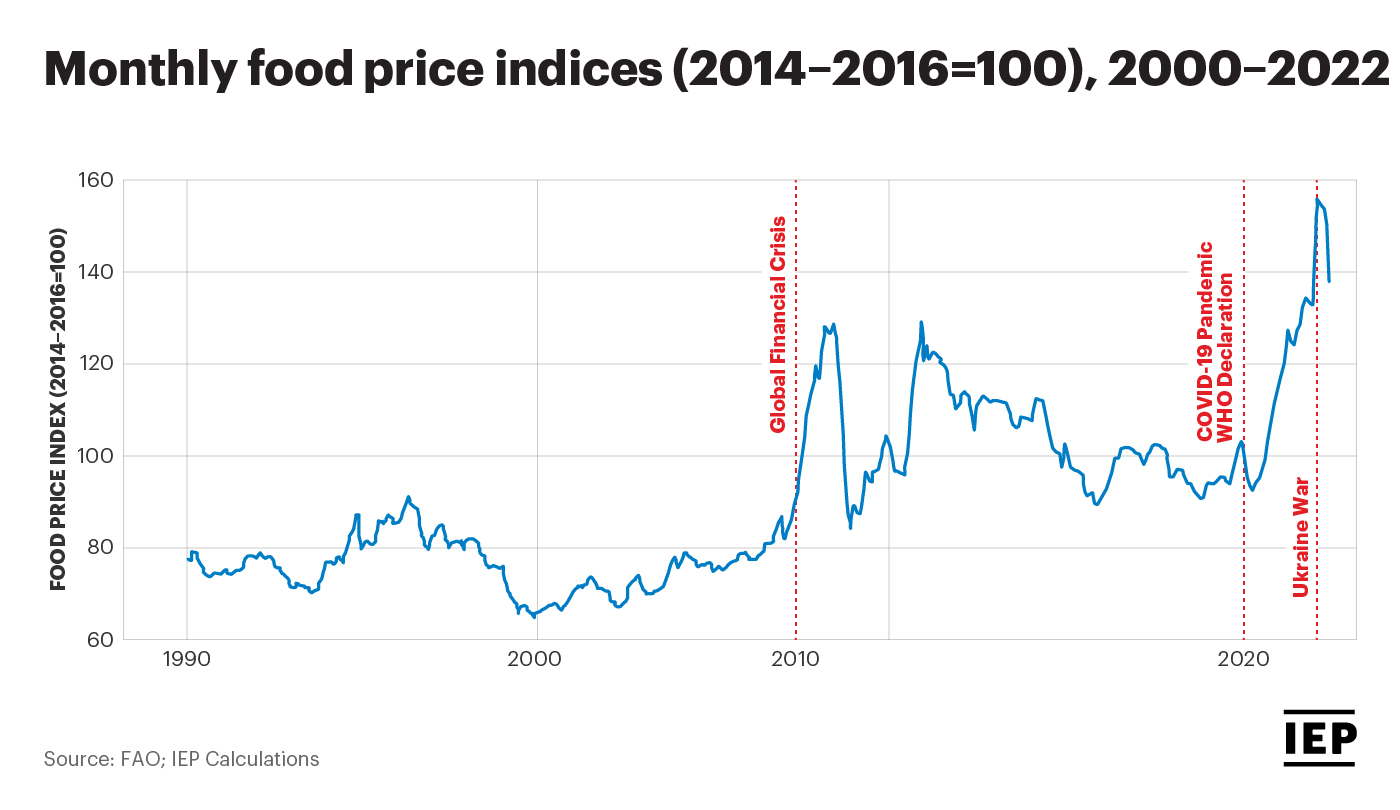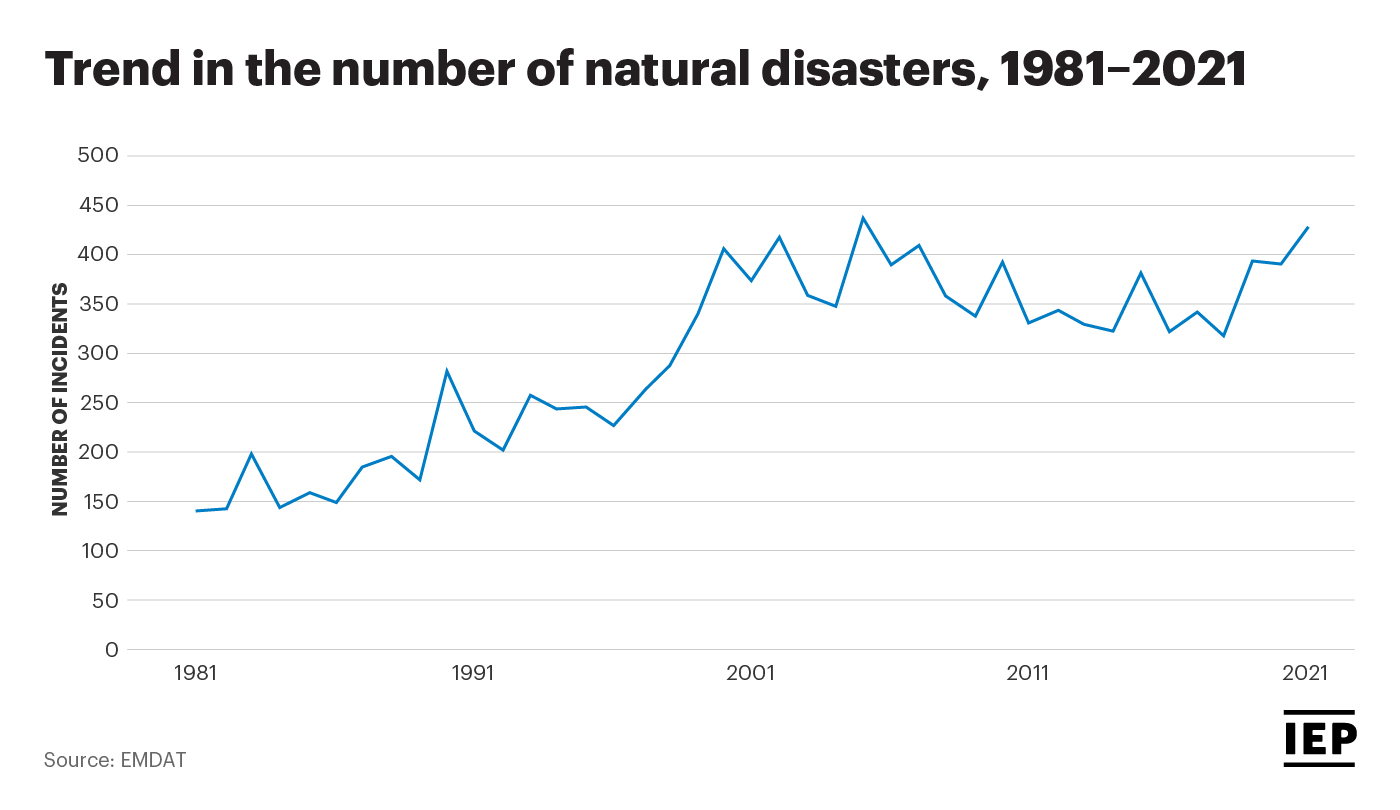The Egyptian city of Sharm el-Sheikh is hosting the 27th United Nations Climate Change Conference or COP27. Over the 12 day conference, representatives from the 198 countries that have signed the UN Framework Convention on Climate Change will be meeting to discuss progress on the fight against climate change and working together on future plans.
While the focus of COP27 is largely on implementing the reductions in emissions agreed upon in previous conferences and limiting future global warming, there are a number of key issues that are also likely to be on the agenda at this year’s conference.
Food security is one of the most pressing threats facing the world. Massive population increases, climate shifts and rising instability are all impacting the world’s food supplies and increasing food insecurity. 10% of the world’s population are undernourished, and this figure continues to climb.
The concept of food security comprises two elements – food availability and food accessibility. Food availability requires that there is a sufficient quantity of food being produced or imported; while food accessibility requires that legal, social and political arrangements ensure populations can access the available food appropriately. Climate threats have the potential to undermine both of these elements.
Host nation Egypt is one country that is becoming increasingly food insecure, and represents a clear example of the risks this can pose. Egypt imports more wheat than anywhere else in the world making up 40% of Egypt’s calorie intake. This food source has been significantly impacted by global factors such as Russia’s invasion of Ukraine, as the world’s leading wheat exporter, as well as rising global agricultural costs. While ecological threats can impact the production of food, instability can dramatically impact both the cost of food and reduce access to it.

Similar to food security, the complex problem of water security is an increasingly prominent threat. Droughts and floods are occurring with increased frequency and intensity, and this is impacting water security across the world.
IEP’s research suggests that 1.4 billion people are exposed to extreme water stress globally, with this number expected to rise. In the affected countries, up to 20% of the population cannot reliably access clean drinking water. This issue has significant social impact. Water-related violence has increased threefold since 2000; and as more people struggle with this issue, there is the potential for this trend to continue.
The brutal war in Syria is perhaps the clearest example of the potential devastation that water insecurity can trigger, and the knock-on effects that ecological threats can have. The war in Syria was preceded by a massive drought that occurred from 2006 to 2010. The drought almost completely destroyed agriculture in Syria, killing half of all crops and around 85% of livestock. The soil was stripped of its nutrients, rendering much of the arable land useless. Millions were displaced, many of whom travelled to urban areas that were already overpopulated by those fleeing the Iraq war. These urban areas were unable to support the influx of migrants. This resulted in massive inflation and unemployment, creating the material conditions that ensured the Arab Spring acted as a catalyst for a devastating war.

There are currently 33 megacities in the world, however, this is projected to rise to at least 47 by 2050. This rapid urbanisation is occurring for a number of reasons including population growth, ecological degradation and resource scarcity; all of which drive people to seek opportunities in urban areas.
Many of these triggers are climate-related. Furthermore, when unplanned urbanisation occurs it can also act as a catalyst for further ecological degradation, triggering spikes in pollution and exacerbating underlying social, political and economic fissures. When urbanisation occurs rapidly, there is the potential for overcrowded and under-resourced slums to develop. These areas are often riddled with issues related to hygiene, food and water; and are often highly at risk from further ecological threats.
Mexico City is one example of a megacity struggling to sustain a massive population. Currently the city houses 20 million residents, with this projected to rise to 30 million by 2030. The huge population growth has drained the lake on which Mexico City is built, leading to parts of the city sinking by 50 centimetres per year. Poor infrastructure has led to the mixing of freshwater with sewage, with Mexico City now importing 40% of its water and struggling with water shortages.
This year’s conference is taking place after a year of serious environmental crises, which included two-thirds of Pakistan being left underwater from unprecedented floods, and a record-breaking European summer in which the UK reached 40 degrees Celsius for the first time in recorded history.
Natural disaster occurrences have been dramatically increasing in recent years, and are occurring at ten times the rate that they did in the 1960s. Climate0-related triggers and rapid population growth are both partly responsible for this trend. The increase in the frequency of natural disasters has resulted in these events costing over four times what they did in the 1980s, with an average cost of $200 billion a year.

Despite accounting for just 4% of global emissions, sub-Saharan Africa is among the regions of the world facing the most severe impacts from climate change. The disproportionate impacts of the climate crisis are a common theme, with many of the world’s most vulnerable countries having a historically small carbon contribution yet facing the most severe ecological threats. With the impact of climate change disproportionately falling on less wealthy and lower resilience countries, calls for climate reparations have been steadily growing.
The current model for funding climate aid is geared towards mitigation and adaptation measures to avert damage, and critics suggest that this does not appropriately equip people with the means to recover from the impacts of climate change and ecological shocks.
Even when an aid package can be agreed upon, the delivery of the aid is not necessarily guaranteed. During 2009’s COP in Copenhagen, wealthy states agreed to contribute $100 billion a year in climate aid to developing nations to help combat climate change. To date, this target has not been reached once. The perfect storm of the COVID-19 pandemic and Russia’s invasion of Ukraine has contributed to a significant global economic downturn. This challenging economic backdrop is likely to see countries reassess their overseas development aid and impact the support that vulnerable countries need.
Meanwhile, even if the Copenhagen targets were to be met, current funding would still fall short of what is required, with the scope of the problem beyond the budget capabilities of all the international agencies combined. As funding decreases in the wake of the challenging global economic environment, it will become even more critical to leverage private sources of funding.
In 2021, IEP held a series of policy seminars with a number of leading experts from governments, think tanks, military institutions and development organisations to explore policy options to address increasing ecological threats. These meetings highlighted some of the issues with the current global approach to tackling climate change and ecological threats.
The focus on climate policies that change behaviours and target emission reduction is an important pillar in the global fight against climate change. However, pursuing this alone is insufficient with the current approach not working. Long-term mitigation and resilience-building is critically important, and must also be pursued.
Funding the strategies to mitigate these issues remains a challenge, however, a restructuring of systems and increasing engagement with the private sector can have an enormous impact.
IEP’s calculations suggest that just 1% of the assets of global pension funds would constitute an investment of $500 billion, over three times what the OECD allocates towards foreign aid annually. These alternative revenue streams could potentially play an enormous role in supporting efforts to build resilience and avoid crises.
The Ecological Threat Report highlights the current danger ecological threats pose and the immediate need for addressing these issues. If the world fails to adequately manage these threats, ecological degradation will worsen. Social challenges, threats to health and incidents of forced migration will increase, and as a result current conflicts will likely escalate. It is these threats that are likely to dominate much of the discussions at COP27.
While ecological threats can be exacerbated by climate change, suitable long-term systemic solutions can also elicit a compound effect to tackle these issues. Furthermore, many of the solutions to ecological problems can generate income. One example is an investment in projects that assist with the provision of water. This water can then be used to grow food and generate income while reducing water insecurity. If business can clearly see how to garner a profitable return from ecologically positive investments, funds will naturally flow towards ecological solutions.This will have the effect of addressing ecological threats in these vulnerable areas in the short-term, while boosting long-term resilience.
Multilateral cooperation and a holistic systems-based approach that engages a broad range of actors will be key to meeting these challenges. Events such as COP present an unique opportunity for key stakeholders to get together and collectively drive towards making these changes.